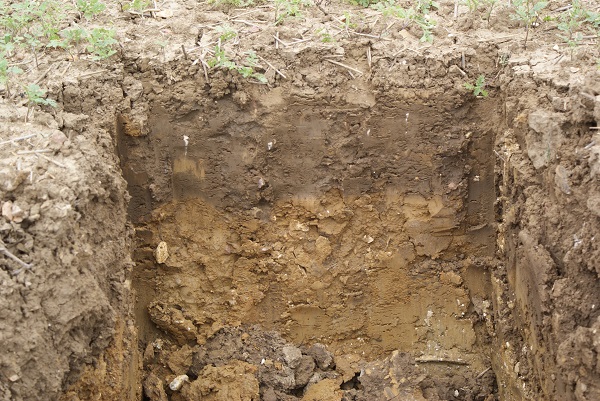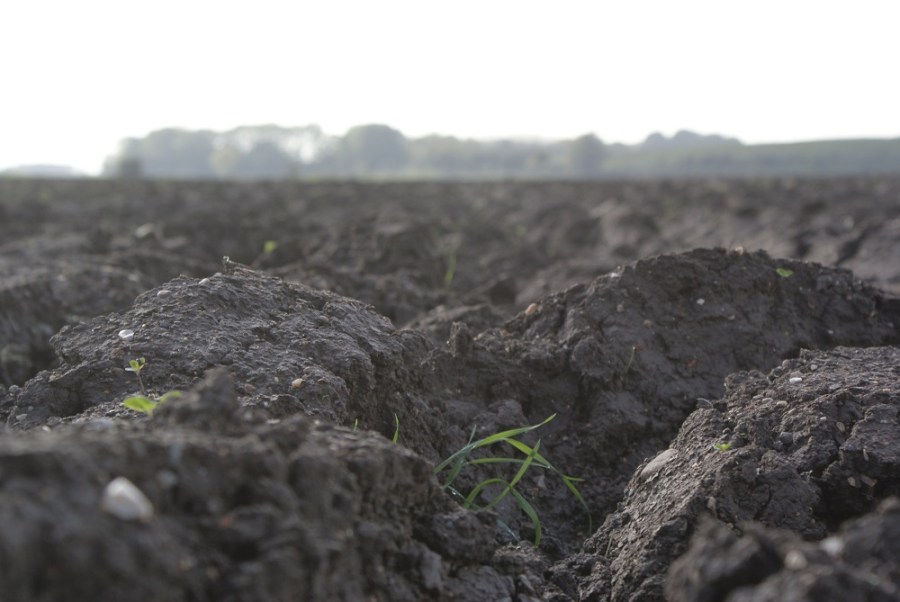Soil health has hit the headlines, pushed to the foreground as a primary focus as a new agricultural policy comes together. CPM explores the practical aspects of making sure your natural assets are not just in good heart, but at peak performance.
The first step on the road to better soil health is to assess it.
By Lucy de la Pasture
As the general picture begins to unfold as to how agriculture may be supported in the post-Brexit era, the emphasis seems to be very much on public money for public goods. In the words of the father of ecology Thomas Jefferson, ‘while the farmer holds the title to the land, actually it belongs to all the people because civilization itself rests upon the soil’.
The importance of soils and their management has been widely recognised by farmers over the past few years, believes Dr Paul Fogg, Frontier Agriculture’s crop production technical lead.
“The new political emphasis on managing natural capital means it’s a subject that’s likely to continue to move up the agenda, especially if there’s a link to support payments,” he says.

A spade can reveal a lot about a soil and a mini-digger makes the job easier.
But government agricultural policy is far from being the only driver towards improving the state of the nation’s soils, he continues. “There are also environmental reasons to reduce soil degradation that are in the interest of both the public and growers, not forgetting the fact that soils form a fundamental element when it comes to increasing a crop’s gross output.
“Our weather patterns have changed, leading to more extreme climate events. This has led to concerns about soil erosion and run-off of sediment and sediment-entrained nutrients into receiving water bodies. While future farm support is currently grabbing the headlines, the need to comply with the Water Framework Directive hasn’t disappeared,” he comments.
And it’s the condition of UK soils that holds the key to mitigating many of the environmental risks. “The first step on the road to better soil health is to assess it. But what is a ‘good status’, how can it be maintained and, if it’s in a degraded condition in any one of the three key areas that contribute to its overall health – physical, chemical and biological – how can soils be remediated?”
These are all big questions and, at the scale of farming systems, the scientists’ understanding of the impacts of management on soil health is incomplete. Where it does exist, it’s fairly sketchy, says Paul.
To improve on this position, AHDB are funding the GreatSoils project which aims to fill in some of the gaps in knowledge and Frontier are a part of its industry consortium, the Soil Biology and Soil Health Partnership.
“Getting a benchmark of soil’s overall health is important because if its status is unknown, then it’s impossible to know how best to manage the soil going forward.”
The first indications of problems can be observed from field walking and surface observations, adds Paul. “Wet spots may indicate blocked drains or compaction, look for areas of poor plant establishment or growth and evidence of previous year’s wheelings.”
To get an idea of the physical state of the soil, digging a hole with a spade or mini-digger will tell you a great deal, says Mike Slater, fertiliser technical development manager.
“See what lies below the surface. You can find compacted layers, while grey colours at depth indicates seasonal water logging, look for macro pores (worm channels and roots) and their depth. You can then link this to basic soil tests for pH and macronutrients,” he says.
Because soil health is a complex interaction of physical, chemical and biological factors, in order to benchmark a soil it’s necessary to have key indicators, because it’s not feasible to measure everything, explains Paul.
Comprehensive soil tests have been developed which provide information on these aspects of soil health and are available from a number of sources, adds Simon Parrington, commercial director of Soyl Precision Crop Production.
“Frontier provide a ‘Soil Life’ test which uses the results of physical, chemical and biological analyses to determine the soil vitality index, which provides a measure of the soil’s ability to sustain high crop yields.”
Soil type is something that can change across the field and sometimes a field can contain as many as 4-6 different classifications, adds Simon.
“That means not every part of a field will behave in the same way. Nearly every decision that’s made on the farm makes some allowance for soil type, so it’s helpful to understand their different requirements and potentials,” he says.
Mapping can provide more sophisticated benchmarking and Simon recommends a comprehensive analysis for every different soil type on the farm, with further tests in the best and worst performing areas. By knowing precisely what the soil status is at exact points in the field, it’s possible to link with a comprehensive soil health report, enabling appropriate management of different soil zones within fields.
All of this information can be used in a number of ways to help soil management decisions, he continues. “It can be used to help understand variable crop performance by linking to crop response data, using either mapping or satellite imagery. In areas where the crop is struggling, the explanation probably lies in soil health.”
Two key issues Frontier have found in their analyses of soils from across the UK are compaction and a reduction in the levels of organic matter. Organic matter content is one of the components of the biological health of the soil.
According to research, there’s increasing evidence that increased organic matter inputs and reduced tillage act together to promote increased biological activity. There’s also some indication that resilience to extreme events may be increased as a result of increasing the organic matter content of soils.
“Improving soil structure, organic matter content and biological activity will aid infiltration of rainfall, reducing surface water run-off and increasing the ability of the soil to hold water (water holding capacity). If soils can retain more water at source then it’ll help mitigate flood risk further down the catchment,” adds Paul.
“The benefit to growers is better rooting and more efficient capture of resources, such as water and nutrients,” he says. “It’s getting the right balance between soil aggregates, soil organic matter and total spore space that helps provide anchorage, air, water and soluble nutrients to the crop.”
Mike agrees with Paul that the key objective to building resilience in soils is to develop a structure that keeps water within it and allows roots to penetrate deep enough to access water during dry times. It’s of particular significance since ADAS studies have revealed modern varieties tend to be shallower rooting and this fact, in combination with establishment techniques and soil condition, means many crops are running out of water because they don’t have sufficient rooting to depth, he says.
Mike highlights the role organic matter plays in helping to maintain soil structure and prevent the ‘squashing’ of soils by machinery.
“Incorporation of crop residues, use of cover crops and application of organic matter amendments all help improve the light fraction organic matter material in soil. This is a source of water soluble carbohydrates for the microbes in the soil, and improved microbe activity will increase nutrient recycling and their availability to the crop,” he says.
Soil benefits of cover crops
Cover crops have been a subject of increasing interest over the past few years, in parallel with a growing awareness of soil health. And it’s the action of the roots in the soil that can greatly help re-engineer a soil at a depth, often far more effectively than machinery, says Richard Barnes, sales manager for specialist seed company Kings.
They should be looked at as in integral part of the crop rotation and its agronomic objectives, not as a stand-alone crop, he believes. “The right cover crop will be different from farm to farm, depending on the reasons the crop is being grown and how it fits into the existing rotation.
Cover crops are one way of introducing organic matter to the soil, and all the benefits it brings to the overall health of the soil, as well as mopping up nutrients which may otherwise be leached away over the winter.
Information on nutrient planning for the subsequent spring crop can also be gleaned while the cover crop is in the ground, he points out.
“Soyl have a new biomass mapping service which can provides valuable information for planning nutrition for the following crop. It can also be used to highlight poor performing areas of fields which will make ideal candidates to go into Ecological Favoured Areas (EFA) in the future,” he says.
Kings are investing in research and development work with the Game and Wildlife Conservation Trust. “The Loddington work, on heavy clay soils, is looking at reducing pollution at source – so what’s applied to the field, stays in the field. They’ve found that planting green cover crops can be very effective at this,” he says.
“Further trials at James Hutton Institute are investigating the interaction between cover crops and spring barley over three years. After two seasons there’s been no adverse effects on barley establishment, malting quality or yield. In addition, the soils are showing increased resilience where cover crops have been incorporated into the rotation compared with where stubbles were left bare over-winter.”
Smart cultivation helps keep the pressure off
The change in cultivation practices in the UK towards non-inversion tillage reflects the growing awareness of soil health issues by growers, says Simon Parrington. “The continual movement of soil introduces oxygen, leading to the oxidation of organic matter. This makes the soil vulnerable to compaction, which prevents root development, limits nutrient and water uptake, and increases the risk of waterlogging in winter.
“Large machinery and huge horse power mean it’s possible to work soils when they shouldn’t be. If cultivations are carried out beyond the soil’s plastic limit then irreversible damage can be done,” adds Paul.
The digital age has enabled the introduction of ‘smart cultivation’, employing variable depth technology to make sure different soil types are only worked to their optimum depth. An ‘all bells and whistles’ version can be equipped with various sensors to give real-time soil information and be fully automated so working depth is adjusted accordingly, but Simon explains that the same principles can be used in a non-precision farming situation.
“If a soil is worked too deep for its soil type, it’s possible to cause more damage than remediation. So establishing the correct depth for each different soil type on the farm helps prevent damage. All that’s needed is a soil map of the field and the working depth can be manually adjusted according to soil type,” he suggests.
“The primary benefit is a reduction in fuel usage by working at the optimum depth and in the medium term, soil structural improvements will be the result.”
Prevention is better than cure when it comes to keeping soil damage from occurring, believes Mike. “On any soil it’s important to be aware of causing compaction at depth, so be mindful of tyre selection and axle weights. Making sure tyre pressures are adjusted according to conditions will help to minimise damage,” he advises.
“Subsoiling is only a useful activity for busting compaction when soil conditions are dry enough. If this isn’t the case, then it’s a waste of time and will do more harm than good. If the soil has become plastic, smearing will be the only result, he adds.
Arable resilience
UK Farming is facing changing times which will bring both new challenges and opportunities. Whatever happens, businesses that adapt and have a resilient strategy in place will be better placed to weather the changes and emerge fitter and stronger, ready to take advantage of what lies ahead. But what does that mean on farm?

In this sponsored series, CPM has teamed up with experts from Frontier to examine the everyday management decisions and explore what separates a resilient strategy from one that leaves a business exposed. From rotations, nutrition and precision techniques, through seed choice, genetics and markets to soil and plant health, the aim is to highlight the elements that ensure the arable business thrives.




